Chemistry

Bisphenol A (BPA) is a chemical that is used in a variety of consumer products, such as water bottles, dental composites and resins used to line metal food and beverage containers. Often, aquatic environments such as rivers and streams become reservoirs for contaminants, which can include products containing BPA.
A new experiment was able to expose fish to endocrine-disrupting chemicals and cause them to pass adverse reproductive effects onto their offspring as many as three generations later, leading the authors to suggest that BPA could have adverse reproductive effects for fish and also…
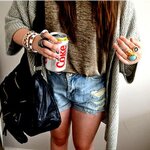
Soft drinks are loaded with sugar because they need to be sweet. But why is sweetness the fundamental consideration?
Some candies are sour and people love them. When did we become so polarized about sweet and salty? Some of it is just culture and so it would take time to adjust. A friend of mine moved to the U.S. from Korea and an early comment was, 'There is so much cheese' but Americans don't realize that we have dairy everywhere. 'Soft' drinks as we know them were created so merchants could sell something on Sundays, when 'hard' drinks were not allowed. Because the market was also kids…

Bioplastics are used in medical applications such as wound healing dressings, sutures, catheter tubes and drug delivery and bioplastics made from protein sources such as albumin and whey have shown significant antibacterial properties.
They could even be used for food packaging, according to a recent study by the University of Georgia College of Family and Consumer Sciences.
Researchers tested three nontraditional bioplastic materials--albumin, whey and soy proteins--as alternatives to conventional petroleum-based plastics that pose risks of contamination. In particular, albumin, a…
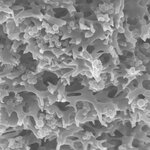
In January of 2015 the European Food Safety Authority (EFSA) lowered the threshold value for bisphenol A in packaging. The scientific determination behind that is irrelevant at this point, the only times Europe backs off on bizarre science assertions are when it comes to things like making ugly fruit illegal to sell or claiming water does not cure thirst, so companies are stuck with creating dubious alternatives or just using less, but the public is often educated by advertising so they want less of it in the environment.
One solution may be new types of membrane adsorbers.…
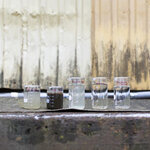
Our bodies do not absorb all of the medicines we might take, some are excreted and though the impact individually is minor, over time and in a large population, there are concerns that such medical waste will lead to issues like antibiotic resistance.
Researchers at Lappeenranta University of Technology in Finland tested the removal of drug residues using membrane filtration and oxidation and that these technologies remove 95% and, in some cases, up to 99% of contaminants and nutrients. That is quite good but even small concentrations of contaminants from a large enough group of people…

In 1996, the Nobel Prize for Chemistry went to the discoverers of Buckminsterfullerene; soccer-ball-shaped spheres of 60 joined carbon atoms that exhibit special physical properties colloquially called Buckyballs.
It was only a time before someone found a way to weaponize those, but in this case for the public good: Buckybombs. But these nanoscale explosives will target and eliminate cancer at the cellular level, triggering tiny explosions that kill cancer cells without affecting surrounding tissue.
Carbon nanotubes, close relatives of bucky-balls, are used already to treat cancer.…

Hydrazine was reported once in a limited sample of cigarette tobacco and tobacco smoke over 40 years ago[1] but ever since then it has been assumed as fact that hydrazine must be present in smokeless tobacco products as well, without anyone actually examining those products for its presence.
Hydrazine is found in maleic hydrazine, which is a sucker growth inhibitor on tobacco crops. Suckers are side shoots, which if not removed affect the quality and yield of the tobacco plant. Hydrazine is classified as a possible human carcinogen by the International Agency for Research on Cancer, which can…

Researchers trying to understand why some people have more severe wheat-related health problems than others, and with different products, have found new clues in how the grain's proteins, including gluten, change when cooked and digested.
Gianfranco Mamone and colleagues say that boiling pasta releases some of its potential allergens, while other proteins persist throughout cooking and digestion. Their findings lend new insights that could ultimately help celiac patients and people allergic to wheat.
Pasta is one of the most popular foods in Europe and the U.S. and though going gluten-…
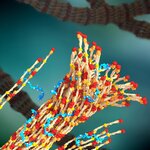
A new injectable polymer
called PolySTAT
strengthens blood clots and that means that soldiers who might otherwise die from uncontrolled bleeding before reaching a surgical hospital could be saved. Likewise for civilian traumas.
A tourniquet won't stop bleeding from a chest wound, and clotting treatments that require refrigerated or frozen blood products aren't always available in the field.
Enter PolySTAT, which is administered via a simple shot and finds any unseen or internal injuries and starts working immediately. It has been tested in rats, and researchers say it…
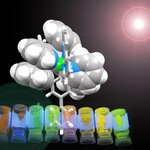
Lighting technology is in a state of change. Incandescent bulbs, which have been around forever, have been banned in the United States but the heavily-subsidized replacement, compact fluorescent bulbs, run the risk of mercury poisoning if they break and have a glow that many don't find appealing. Light emitting diodes (LEDs) are likely the technology of choice in the mid-term future but they are expensive.
At some point, light bulbs may be one of those things we no longer have to think about but until then the race is on to make a cost-effective bulb that can be used without people…